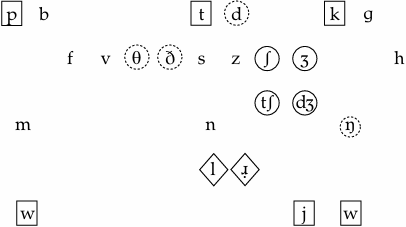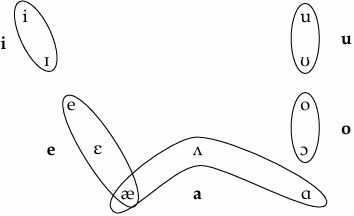

Grammar


Tenses


Present

Present Simple

Present Continuous

Present Perfect

Present Perfect Continuous


Past

Past Continuous

Past Perfect

Past Perfect Continuous

Past Simple


Future

Future Simple

Future Continuous

Future Perfect

Future Perfect Continuous

Passive and Active


Parts Of Speech


Nouns

Countable and uncountable nouns

Verbal nouns

Singular and Plural nouns

Proper nouns

Nouns gender

Nouns definition

Concrete nouns

Abstract nouns

Common nouns

Collective nouns

Definition Of Nouns


Verbs

Stative and dynamic verbs

Finite and nonfinite verbs

To be verbs

Transitive and intransitive verbs

Auxiliary verbs

Modal verbs

Regular and irregular verbs

Action verbs


Adverbs

Relative adverbs

Interrogative adverbs

Adverbs of time

Adverbs of place

Adverbs of reason

Adverbs of quantity

Adverbs of manner

Adverbs of frequency

Adverbs of affirmation


Adjectives

Quantitative adjective

Proper adjective

Possessive adjective

Numeral adjective

Interrogative adjective

Distributive adjective

Descriptive adjective

Demonstrative adjective


Pronouns

Subject pronoun

Relative pronoun

Reflexive pronoun

Reciprocal pronoun

Possessive pronoun

Personal pronoun

Interrogative pronoun

Indefinite pronoun

Emphatic pronoun

Distributive pronoun

Demonstrative pronoun


Pre Position


Preposition by function

Time preposition

Reason preposition

Possession preposition

Place preposition

Phrases preposition

Origin preposition

Measure preposition

Direction preposition

Contrast preposition

Agent preposition


Preposition by construction

Simple preposition

Phrase preposition

Double preposition

Compound preposition


Conjunctions

Subordinating conjunction

Correlative conjunction

Coordinating conjunction

Conjunctive adverbs


Interjections

Express calling interjection


Grammar Rules

Preference

Requests and offers

wishes

Be used to

Some and any

Could have done

Describing people

Giving advices

Possession

Comparative and superlative

Giving Reason

Making Suggestions

Apologizing

Forming questions

Since and for

Directions

Obligation

Adverbials

invitation

Articles

Imaginary condition

Zero conditional

First conditional

Second conditional

Third conditional

Reported speech


Linguistics

Phonetics

Phonology


Semantics


Pragmatics

Linguistics fields

Syntax

Morphology

Semantics

pragmatics

History

Writing

Grammar

Phonetics and Phonology


Reading Comprehension

Elementary

Intermediate

Advanced


Teaching Methods

Teaching Strategies
Greek–English
المؤلف:
Mehmet Yavas̡
المصدر:
Applied English Phonology
الجزء والصفحة:
P192-C8
2025-03-18
215
The overlay of the L1 consonants onto the English targets results in the following picture:

Other Greek phonemes not relevant for mismatches are /x, ɣ/.
Starting with the targets missing in the L1 inventory, we note the lack of palato-alveolar fricatives /ʃ/ and /Ʒ/; these tend to be replaced by the alveolar fricatives with their combinations with [j] as [sj] and [zj] respectively. Also lacking in Greek are the palato-alveolar affricates /tʃ/ and /dʒ/, which are replaced by the closest native alveolars, /ts/ and /dz/, respectively.
Although circled as a missing target phoneme, /ŋ/ is a little different from the others, because [ŋ] is an allophone of /n/ in Greek occurring before velar obstruents. Thus, problems are expected only in its occurrences in English with no adjacent velar stops.
Voiceless stops in Greek are always unaspirated. Thus, problems are expected for the English targets in the beginning of stressed syllables.
As far as the salient phonetic differences are concerned, we need to high light the liquids. The Greek alveolar lateral is always ‘clear’ and exemplifies a salient phonetic difference; the r-sound in Greek is also noticeably different, as it is an alveolar flap or trill. A minor difference can be cited between the /t/ and /d/ phonemes in the two languages; while these two are alveolars in English, they are dentals in Greek.
Positional/distributional restrictions are also sources of difficulty. All Greek consonants can occur initially and medially, and all except /d, θ, ð/ (among the relevant ones) occur finally. Thus, English targets with the above three in final position may cause problems.
Glides /w, j/ can create problems between the two languages, as Greek learners of English tend to hear and pronounce these glides as high vowels /u/ and /i/ respectively. While there is sufficient phonetic similarity between the glides and the corresponding high vowels, pronouncing them as vowels will give the impression to the English native speaker that there are separate syllables.
Vowel mismatches create the following insufficient separations for the target distinctions:

Greek has no diphthongs, but two vowel sounds can occur in sequence, and thus learners can handle the target English diphthongs.
Major problems with phonotactics are associated with the final clusters, which are non-existent in Greek. Thus, in addition to some simple codas pointed out earlier, Greek speakers will have problems with all the complex codas of English.
Greek is another syllable-timed language in our list, and expectedly has no vowel reduction. This results in considerable difficulties in learning the rhythm of English. In addition, different lexical stresses in the two languages are sources of problems.
The following summarizes the major trouble spots:
• missing target phonemes: /ʃ, Z, tʃ, dʒ/;
• aspiration;
• distributional restrictions: /θ, ð, d/;
• salient phonetic differences: approximants;
• insufficient separation of target vowels;
• stress;
• rhythm.